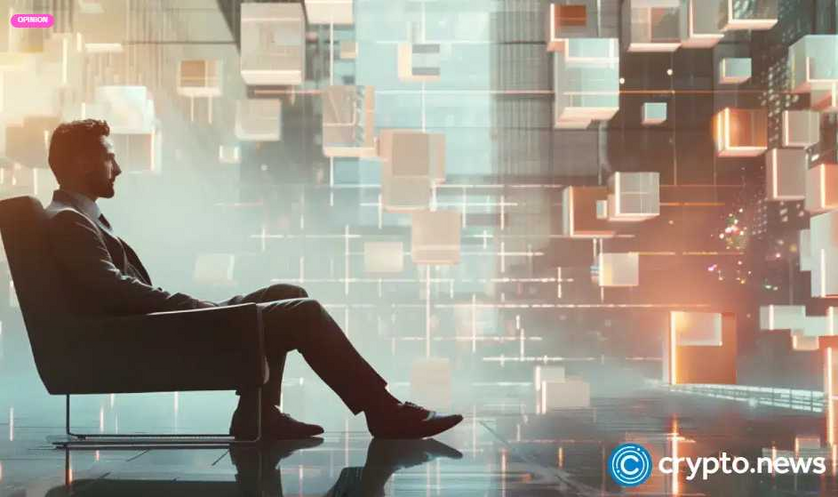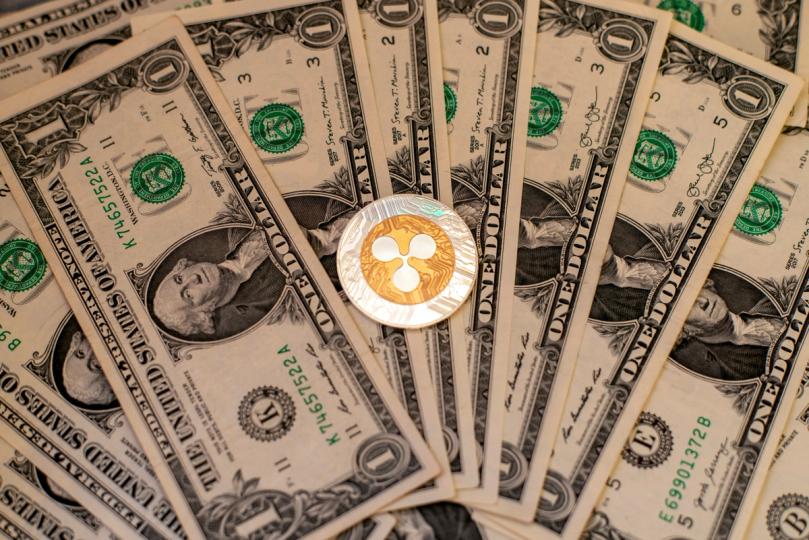This is Part Two of a three-part series interview with William Quigley, a cryptocurrency and blockchain investor and co-founder of WAX and Tether, conducted by Selva Ozelli exclusively for crypto.news. Part One is about Sam Bankman-Fried’s and Changpeng Zhao’s prison sentences. Part Two is about cryptocurrency and banking. Part Three is about the future of NFTs.
1) In Part One of our interview, you indicated that you began your career at Andersen as a bank auditor. Coincub recently issued a crypto banking report that ranks the most crypto-friendly banks in the world. What are your thoughts on tokenizing the banking system?
I could write a book on this topic, but I will summarize my thoughts briefly.
Money and payments have been evolving for as long as they have existed. The methods society has used to store and transfer value during my lifetime have changed, first by digitizing and now by tokenizing. Each major upgrade to the global monetary architecture has introduced both new benefits and new risks over the past several decades. With digitization, the vast majority of what people generally think of as “money” is, in reality, ledger balances sitting on databases maintained by commercial banks. As a general rule, banks use relational databases primarily, but not exclusively, running on Unix and Unix-like operating systems, which were first developed in the 1960s.
The tokenization of the global financial system is still in the early stages. Still, it may have a transformative impact on how ownership of commercial bank deposits, payments, government, and corporate bonds, money market fund shares, gold and other commodities, real estate, and other assets and liabilities are recorded on blockchains and other distributed ledgers, enabling far-reaching new functions.
As detailed in Coincub’s Crypto Banking Report, several financial institutions around the world have been actively exploring the possibility of tokenizing assets to improve the way we transfer value using blockchain technology to facilitate fast, secure, low-cost international payment processing services (and other transactions) through the use of encrypted distributed ledgers that provide trusted real-time verification of transactions without the need for intermediaries such as correspondent banks and clearing houses. Notwithstanding recent advancements in digitization, our banking payment and settlement systems remain slow and inefficient for many users, with delayed settlements for large classes of transactions and numerous intermediaries, each adding layers and layers of costs.
Tokenization and distributed ledgers have the potential to overcome many of these obstacles by globally operating around the clock and introducing settlement finality in real time. Because tokenization offers:
- Programmability—which may make it easier for the bank and bank customers to automatically remove funds, respond to liquidity stresses immediately and automatically, and move liquidity when and where it is needed.
- Instant settlement—which may provide the ability to hard-wire future transfers of value on the ledger that automatically self-execute based on the occurrence of future conditions, thereby increasing the speed and intensity of bank settlements.
- Atomic settlement—which may reduce the risk of loss in the time between payment and delivery or the simultaneous exchange and settlement of payment and delivery, including among multiple parties.
- Immutability of the shared ledger—which may serve as a transaction record and reliable audit trail. Blockchain-based IT infrastructure can significantly reduce payment errors and cut down on account reconciliation time. The transparency and immutability of the ledger can help regulators and law enforcement agencies obtain accurate and verifiable data on token transactions and seize assets from criminals.
While tokenization of the global financial system will face challenges and risks as financial institutions, developers, regulators, and other stakeholders continue developing the technology, we already see examples of how tokenization is beginning to deliver tangible benefits in the global banking industry. For instance, in China, the digital yuan, which was rolled out in 2020, could put China ahead of Europe and the United States in the global race to develop a state-backed digital currency, which is also known as central bank digital currency (CBDC) that is used throughout their banking system. Digital yaun has so far been used mainly for domestic retail and public sector payments in the amount of 100 billion yuan ($14.5 billion), according to data released by the People’s Bank of China.
2) What challenges and risks will tokenization introduce to the banking industry? The fall of cryptocurrency exchange FTX, which we talked about during the first part of our interview, was a watershed moment whose knock-on effects—included a market slump, a crypto banking crisis in 2023 with five bank failures, regulatory backlash, and further bankruptcies. On April 26, U.S. regulators closed Philadelphia-based Republic First Bank, marking the nation’s first banking failure of 2024 due to “material weaknesses in internal control over financial reporting.” However, this may only be the beginning of more bank failures, as consulting firm Klaros Group analyzed about 4,000 U.S. banks and identified 282 smaller banks that face potential losses tied to higher interest rates.
On the technological and operational side, many open questions remain concerning the tokenization of the global banking system. If tokenization plays a central role in our future financial system, with small banks being taken over by larger banks as they fail, many questions remain unanswered:
- Will there only be a small handful of unified, interoperable ledgers of banks on which all tokenized transactions occur globally?
- Or will many banks maintain their own blockchains?
- To what extent will these banking blockchain platforms be interoperable so that customers using different blockchains can transact globally and seamlessly with each other in a safe and secure manner?
- How will cyber security and other financial risks be handled among banks? For example, when Silicon Valley Bank failed last year, stablecoin USDC broke its dollar peg after Circle, the United States firm behind the coin, revealed that $3.3 billion of its $40 billion of USDC reserves backing it were held at Silicon Valley Bank. In contrast, at Tether (USDT)—the world’s first-ever and most traded stablecoin, which I co-established—reserve deposits transparently reported to the public daily were better managed against the risk of bank failures.
Then, there is the legal, regulatory, and tax perspective, with countries introducing different legal regulatory and taxation regimes governing digital assets and blockchains. Additional work is needed to clarify the extent to which ownership and other rights associated with a given asset attach to and move cross-border with a token.
Eventually, these and many other critical questions will be answered—one way or another—as financial institutions, developers, regulators, and other stakeholders continue developing blockchain technology around the world. Meanwhile, with leadership from the Financial Action Task Force (FAFT) and the Organization for Economic Co-operation and Development (OECD), some global standards are being established in money laundering and tax laws.
3) In Part One of our interview, you indicated that you co-founded the first ever fiat-backed stablecoin Tether, the world’s most traded digital asset, taking the lead in the industry with fierce competition from Meta, BRICS countries, and others. Tell us about Tether stablecoin.
Tether is a fiat-backed stablecoin launched by Tether Limited Inc. in 2014. Tether Limited is owned by the British Virgin Islands-based company iFinex Inc., which also owns Bitfinex, a Hong Kong-based cryptocurrency exchange that offers digital asset investing and trading to users outside the United States.
As of May 2024, Tether has been minted on 14 protocols and blockchains. Tether stablecoins avoid the extreme volatility of digital assets, most commonly by tying their values to the price of a traditional currency/fiat currency like the US dollar, euro, or Chinese Yuan. Meta attempted to issue a stablecoin called Libra, which was then renamed Diem, which shut down in 2022. BRICS countries have been eager to issue a stablecoin based on a basket of fiat currencies since 2017. Tether launched #BRICST last year at the BRICs Summit, a BRICS stablecoin to be an alternative to the USD and USDT, and pegged to the Chinese Yuan, offering 10% per annum returns to meet this demand.
Tether is the largest cryptocurrency in terms of trading volume, commanding 64% of the market share among stablecoins. Having surpassed Bitcoin in 2019, USDT became the most traded digital asset in the world. As of May 4, 2024, Tether had over $110 billion, €36 million, ¥20 million, Mex $19 million, and AUDT 246,000 in circulation, leading to concerns about it being a systemic risk for digital asset markets and threatening the stability of wider financial markets.
Tether is generally considered safe for investment, primarily as a means to hedge against the volatility of other digital assets. However, like any investment, it comes with risks, and it’s essential for investors to consider Tether’s efforts to maintain a fully transparent company, by publishing a record of the current reserve assets on a daily basis and heightened regulatory compliance in cooperation with international regulators.
4) As the most traded digital asset, Tether is unavoidably used in illicit transactions. According to TRM Labs, USDT was linked to $19.3 billion of illicit transactions in 2023 and was the most used stablecoin for criminal activity in crypto last year. Do you have any comments concerning the illicit use of Tether?
Since December 1, 2023, Tether has been cooperating with law enforcement and regulatory agencies by introducing a voluntary wallet-freezing policy. Tether offers secondary market controls to freeze transactions associated with individuals listed on the United States Office of Foreign Assets Control (OFAC) Specially Designated Nationals (SDN) List. This list includes companies and individuals controlled or owned by sanctioned countries.
Recently, Tether also announced its partnership with blockchain surveillance company Chainalysis to monitor transactions with its tokens on secondary markets. The monitoring system will help Tether identify risky crypto addresses/wallets that could be used to bypass sanctions or engage in illicit activities like terrorist financing and illicit transfers.






























